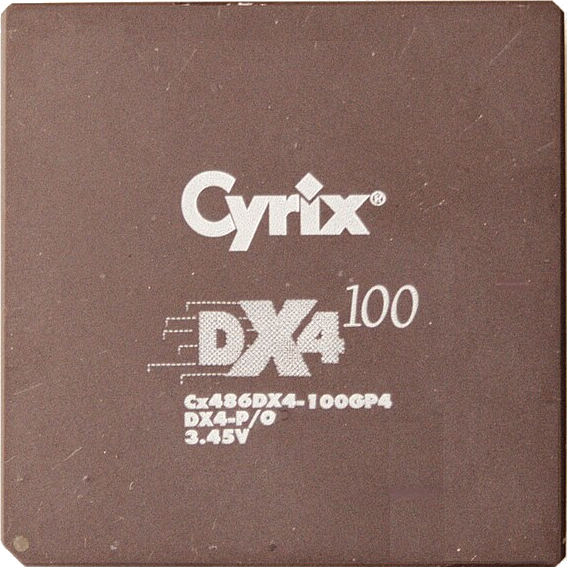I have backups on a backup hard drive and also synced to B2, but I am thinking about backing up to some format to put in the cupboard.
The issue I see is that if I don’t have a catastrophic failure and instead just accidentally delete some files one day while organising and don’t realise, at some point the oldest backup state is removed and the files are gone.
The other thing is if I get hit by a bus and no one can work out how to decrypt a backup or whatever.
So I’m thinking of a plain old unencrypted copy of photos etc that anyone could find and use. Bonus points if I can just do a new CD or whatever each year with additions.
I have about 700GB of photos and videos which is the main content I’m concerned about. Do people use DVDs for this or is there something bigger? I am adding 60GB or more each year, would be nice to do one annual addition or something like that.
Currently the only solution for a consumer are M-Disc Blue rays. They are currently the only “write once read many” media available that are preferable in these types of situations.
The media is comparable cheap - you can safe your amount of data for around 80-90USD/€ initially(or less for more but smaller discs) and then pay around 10$/€ per year for the new amount of data.
The chances that in 20 years someone is still able to read them are fairly high - there are numerous businesses that are using these disc as WORM media to backup important data on a medium that a opposing lawyer later cannot claim “was manipulated”. In 50 years it is very likely to be readable at least by professionals. The discs itself are rated for much longer storage.
If you write on them unencrypted there should be no problem of writing on them. Additionally they do not have issues with byte rot,etc.
Yeah it’s an interesting thought. They seem to come up to 100GB capacity, but the wikipedia page claims (with a [dubious] qualifier) that you need some sort of special higher power burning device to write to M-Disc.
I don’t have an optical drive at the moment. Would I just pick any rated for BDXL?
I’m using blu-ray disks for the 3rd copy, but I’m not backing up nearly as much data as you are.
The only problem with optical media is that you should only expect it to be readable for a couple of years, best case, at this point and probably not even that as the tier 1 guys all stop making it and you’re left with the dregs.
You almost certainly want some sort of tape option, assuming you want long retention periods and are only likely to add incremental changes to a large dataset.
Edit: I know there’s longer-life archival optical media, but for what that costs, uh, you want tape if at all possible.
Hmm I am keen for something that could be left in the cupboard for 50 years and still works when brought out.
What does it take me to do home tape storage? Do the tapes needs to be stored with climate control or are they pretty stable? Is it feasible for the average person to load the contents?
I’m thinking of pulling a suitcase out of the cupboard of all the baby photos, but digital files or photo and video.
Tape isn’t readable by normal people even if they found it tomorrow with a drive already configured to be used.
In 50 years good luck finding a working drive compatible with LTO4 when LTO32 is out (it’s backwards compatible only with previous gen).
Unless you write on the box “here there are the keys for 100k bitcoins” they’ll just trash the tape
Yeah from some other comments I think my initial plan (that I’ll research some more) will be:
- buy a new HDD, format with ZFS or btrfs for error correction
- copy data onto drive
- store in cupboard with sata-> USB cable and instructions about what it is, how to access .
- every year, load the previous year’s data onto the drive
- about every 5 years, replace the drive by copying onto a brand new one (timeframe will likely depend on when my other HDD drives die)
This way I should get a chance to update storage medium as technology changes as well.
That is not gonna work - read up on byte rot.
Yeah since then I’ve been convinced I need two drives mirrored under zfs, which should handle that scenario.
Hard drives loose their data fast if not powered (within a few years),so do SSD based media. Furthermore the former are very suspectable to mechanical destruction, electromagnetic interference,etc. And even if for some reason your drives last that long there will be nothing to connect them to - you know how we connected hard drives 25 years ago? Via SCSI/IDE. Good luck finding a converter to these now. If you go back further you need ISA controllers for the drives.
This is a really bad idea. Really really bad, especially with the goal you want to achieve. Your data will be gone within 5 to 10 years.
The idea is that I’d swap out drives every 5 years or so. If USB A is no longer in use I’d swap out at that point for something newer. Plus the drives would be powered on every year for the update, it’s just the point that I stop doing it (too old/hit by bus/etc) that the clock would start ticking.
I do like the M-Disc idea though. Probably a similar price, and more in line with the shelf-stable solution I was looking for.
I decided instead to use ZFS. Better protection than just letting something sit there. Your backups are only as good as your restores. So, if you are not testing your restores, those backups may be useless anyway.
ZFS with snapshots, replicated to another ZFS box. The replicated data also stores the snapshots and they are read-only. I have snapshots running every hour.
I have full confidence that my data is safe and recoverable.
With that said, you could always use M-disk.
ZFS even if only one server is much better than most people have. If your ZFS replication is to a different building you have done pretty good. However as others have pointed out there are limits. Those servers costs you a couple bucks/month in electric (where I live my electric is 100% wind, but most of you should read CO2). You have to buy both servers, and hard drives will crash regularly.
There are a lot of trade offs, but cold storage backups are often much cheaper in the long run than the backup zfs server. And those cold backups are a lot easier to put into multiple different locations.
I have automated backups including to cloud, but I want a separated manual system that cannot get erased if I mess something up (accidentally sync a delete, lose encryption key, forget to pay cloud bill). I have 3 2 1 but it’s all automated and backups are eventually replaced, if it’s not a critical failure I won’t necessarily know I’ve lost something.
Basically, I specifically want cold storage, and not cloud. I will only add, not delete from it. And I don’t want it encrypted.
Based on other conversations I’m planning on using duel disks mirrored, zfs, annual updates and disk checks with disks rotated out every 5 years (unless failing/failed). Handling the need for layman retrival of data by including instructions with the hard drives.
For local backups it depends on what you want to have:
- The cheapest option is a usb or thumb drive. But you have to regularly plug it in and copy your backup on it.
- The lazy option is to buy a NAS and configure a backup job that regularly creates a backup. Versioned, incremental, differentials and full backups are possible as is WORM to add a bit of extra security. You can configure a NAS to only turn on specified times, do a backup and then turn off again. This will increase protection against encrypting malware. WORM also helps in this case.
Or just let it run 24/7, create backups every hour and install extra services on it like AI powered image analysis to identify people and objects and let it automatically tag your photos. Cool stuff! Check out QNAP and Synology or build a NAS yourself.
A NAS can also be configured to present its content in a LAN by itself. Any computer will automatically connect to it if the access isn’t secured by user/password or certificate.
I recommend buying a NAS.
This was a recent point of discussion on the 2.5 Admins podcast (https://2.5admins.com/2-5-admins-228/). Some good discussion on there.
My own thought is the best way to handle your family-member-finding-your-old-photos problem is the analog way: make some prints. It’s absolutely idiot proof, the methodology of keeping paper goods is well understood, and the technology is platform independent.
Yeah I really want a digital copy, but for redundancy physical photos sounds like a good idea. Maybe I should do the hard drive rotation thing mentioned in other comments, but each year when I’m updating I could print 100 photos as well. Have a suitcase or container where I keep the hard drives and the physical photos. Then I’d have a decent chance of all photos making it in digital form, plus a bunch of photos just in case the hard drives fail. The hardest part will be going back through the previous years finding an printing 100 photos from each year, but after that I don’t have to get through too many each year.
A hybrid is probably a good way forward. I had a career as a photographer for a while and I learned from that: going through 1000 photos takes very little time, but going through 10,000 takes an eternity. If you can star or mark your obviously important photos as you go along, it’ll take very little to print them at the end of the year.
I have not used them myself, but M-DISC sounds like what you’re looking for. There are a few other alternatives listed on that Wikipedia article, too.
Thanks, I think the risk here is that there may not be hardware to read it.
From the suggestions here I’m thinking a hard drive with USB connection would be best. It won’t last 50 years but instead I’d replace it every 5 years or so. I’d use an error resistant file system and plug it in each year to add the new files.
This way I also get the chance to move it to newer technology in future instead of a new hard drive. It would then only need to survive for some period of time after I last replaced it, so there’s a good chance of it remaining readable for most of my life.
Thanks, I think the risk here is that there may not be hardware to read it.
M-Disc DVDs are readable by ordinary DVD drives. So you could simply put a USB DVD drive alongside those backup M-Discs on the shelf.
Yeah that’s an idea. It does seem like I’d need a lot of disks though. And I don’t actually have a disk reader or writer at all at the moment.
Wrong post, ignore this.
Like this? https://www.pbtech.co.nz/product/DVWVER4618789/Verbatim-43888-External-Slim-Bluray-Writer-Ultra-H
That’s NZD by the way, conversion rates are terrible at the moment so about halve it for USD, seems in the price range you said.
Ah, a Kiwi. Say hello to your sheep’s from me. (Sorry,former WA resident here, couldn’t resist)
But yeah, we are using exactly that model - and it’s currently only 20 NZD less from what I pay wholesale in Europe for it. So it seems like a pretty decent price.
The drive itself is solid. We currently have around 10, maybe 15, at our clients and it works without any hassle.
I personally recommend to store the disk’s offsite(I store them in a locked box in a bank vault) and some of my clients choose to store another drive there to be extra safe,but I personally don’t see the point.
🐑
Sweet, thanks, I think that’s a good plan. I am thinking duplicate disks, one on site one off site. I do have a cloud backup, but if I die in a house fire then having the offsite disks is a much better solution than the random B2 bucket.
Thanks for the help 🙂





